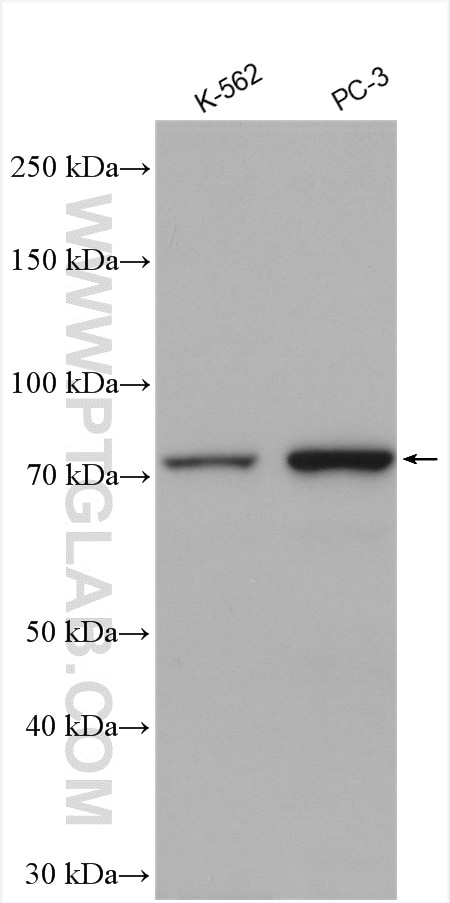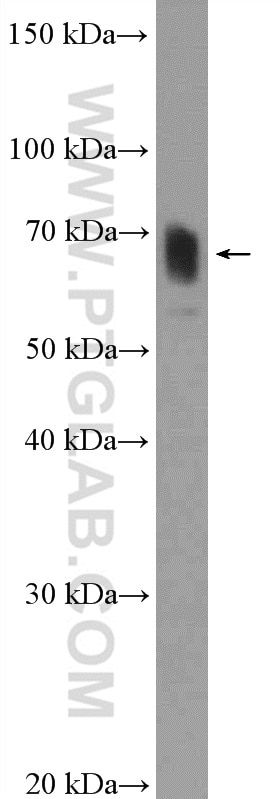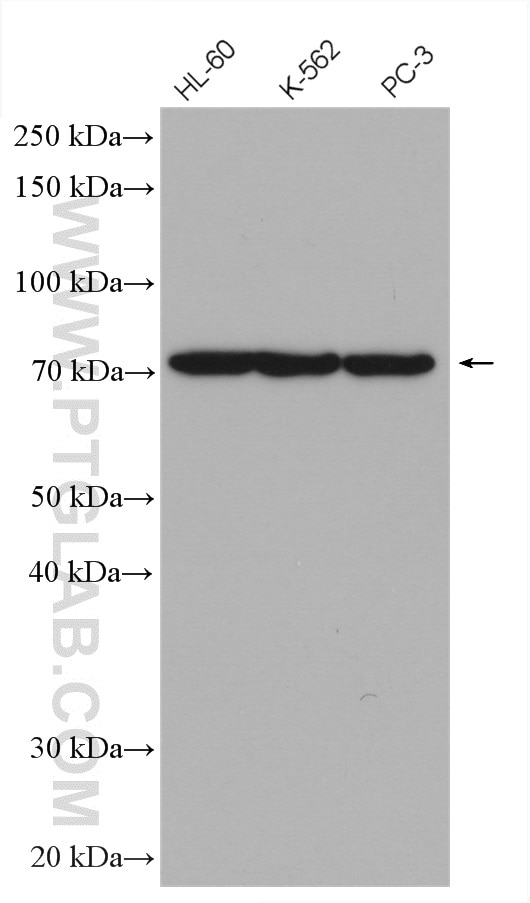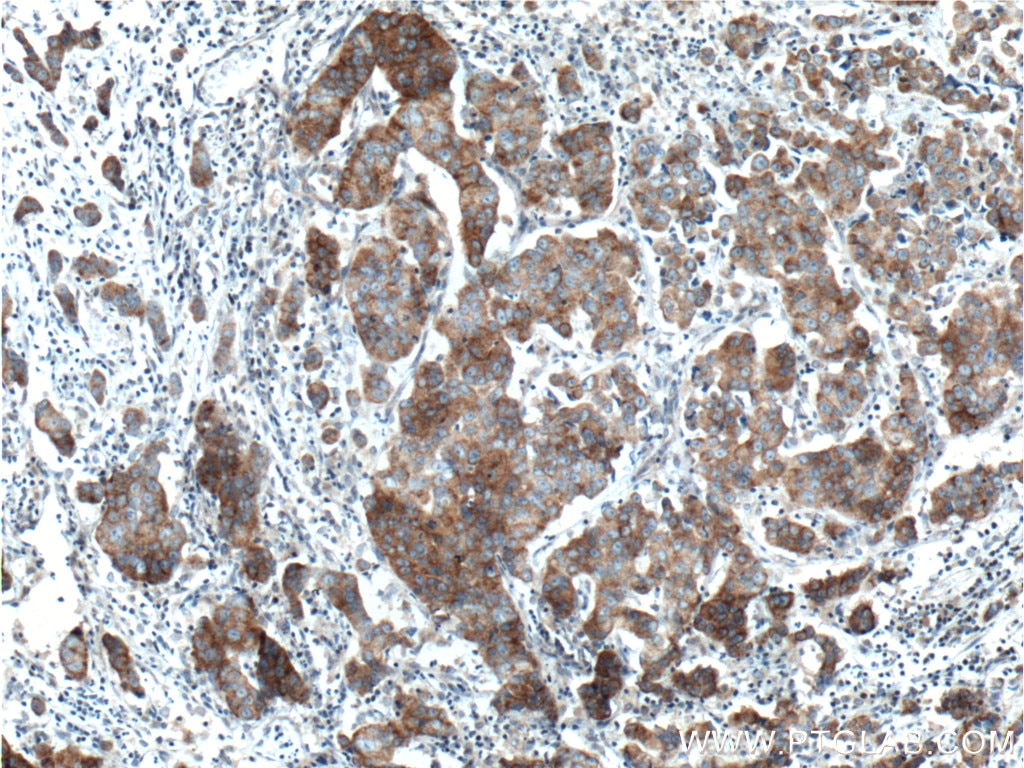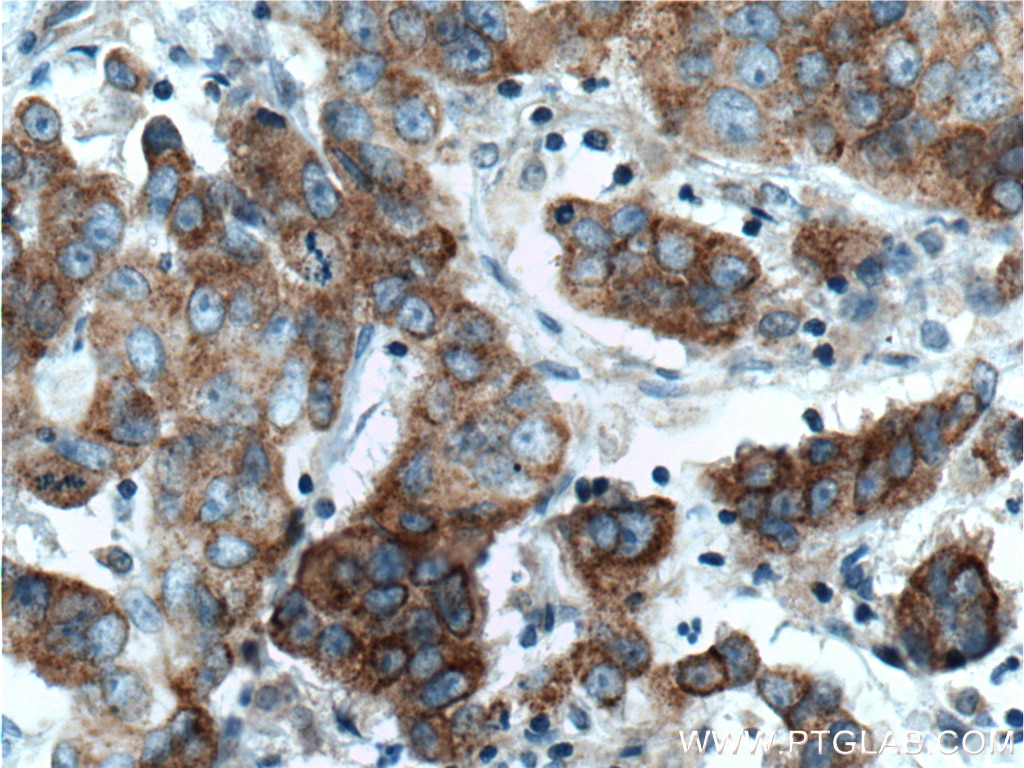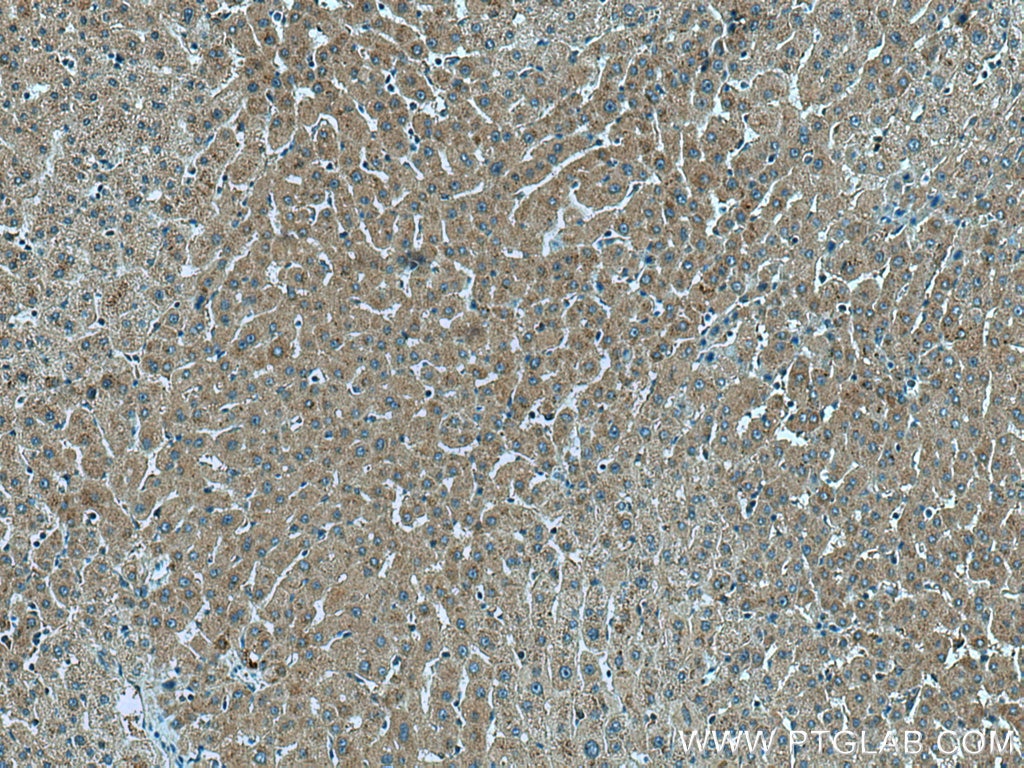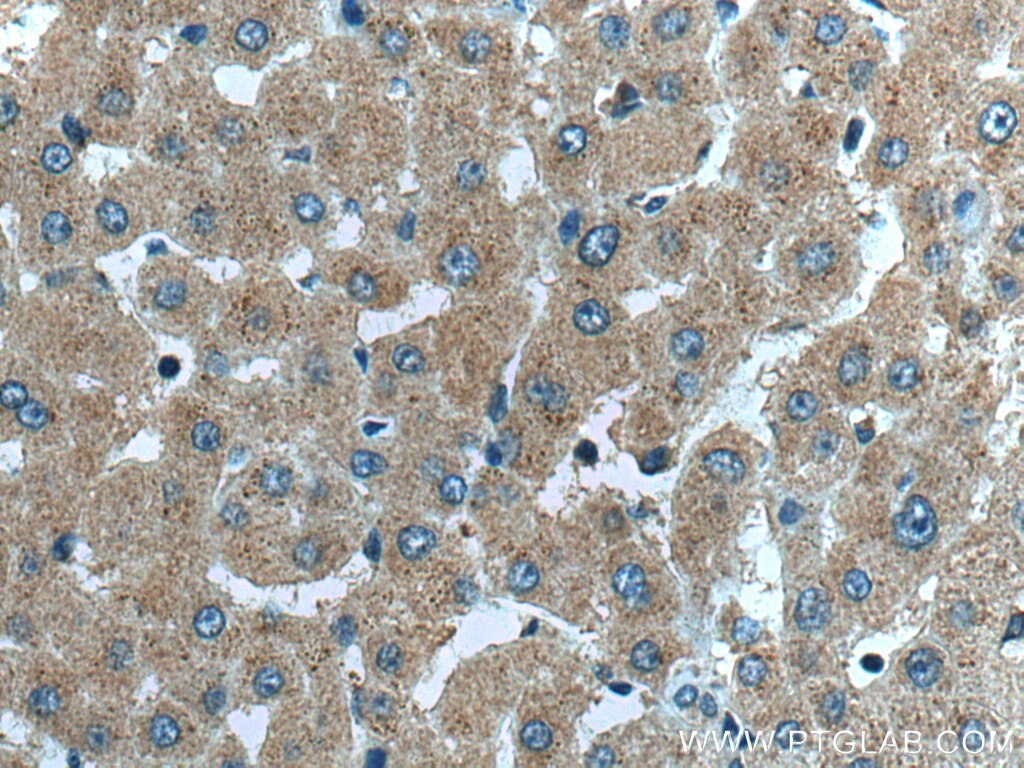Validation Data Gallery
Tested Applications
| Positive WB detected in | K-562 cells, HL-60 cells, PC-3 cells |
| Positive IHC detected in | human prostate cancer tissue, human liver tissue Note: suggested antigen retrieval with TE buffer pH 9.0; (*) Alternatively, antigen retrieval may be performed with citrate buffer pH 6.0 |
Recommended dilution
| Application | Dilution |
|---|---|
| Western Blot (WB) | WB : 1:1000-1:6000 |
| Immunohistochemistry (IHC) | IHC : 1:50-1:500 |
| It is recommended that this reagent should be titrated in each testing system to obtain optimal results. | |
| Sample-dependent, Check data in validation data gallery. | |
Published Applications
| WB | See 2 publications below |
| IHC | See 1 publications below |
| IF | See 1 publications below |
Product Information
14199-1-AP targets TNK1 in WB, IHC, IF, ELISA applications and shows reactivity with human, mouse, rat samples.
| Tested Reactivity | human, mouse, rat |
| Cited Reactivity | human, mouse, rat |
| Host / Isotype | Rabbit / IgG |
| Class | Polyclonal |
| Type | Antibody |
| Immunogen |
CatNo: Ag5402 Product name: Recombinant human TNK1 protein Source: e coli.-derived, PET28a Tag: 6*His Domain: 1-377 aa of BC035782 Sequence: MLPEAGSLWLLKLLRDIQLAQFYWPILEELNVTRPEHFDFVKPEDLDGIGMGRPAQRRLSEALKRLRSGPKSKNWVYKILGGFAPEHKEPTLPSDSPRHLPEPEGGLKCLIPEGAVCRGELLGSGCFGVVHRGLWTLPSGKSVPVAVKSLRVGPEGPMGTELGDFLREVSVMMNLEHPHVLRLHGLVLGQPLQMVMELAPLGSLHARLTAPAPTPPLLVALLCLFLRQLAGAMAYLGARGLVHRDLATRNLLLASPRTIKVADFGLVRPLGGARGRYVMGGPRPIPYAWCAPESLRHGAFSSASDVWMFGVTLWEMFSGGEEPWAGVPPYLILQRLEDRARLPRPPLCSRALYSLALRCWAPHPADRPSFSHLEGLL 相同性解析による交差性が予測される生物種 |
| Full Name | tyrosine kinase, non-receptor, 1 |
| Calculated molecular weight | 72 kDa |
| Observed molecular weight | 72 kDa |
| GenBank accession number | BC035782 |
| Gene Symbol | TNK1 |
| Gene ID (NCBI) | 8711 |
| RRID | AB_2205700 |
| Conjugate | Unconjugated |
| Form | |
| Form | Liquid |
| Purification Method | Antigen affinity purification |
| UNIPROT ID | Q13470 |
| Storage Buffer | PBS with 0.02% sodium azide and 50% glycerol{{ptg:BufferTemp}}7.3 |
| Storage Conditions | Store at -20°C. Stable for one year after shipment. Aliquoting is unnecessary for -20oC storage. |
Protocols
| Product Specific Protocols | |
|---|---|
| IHC protocol for TNK1 antibody 14199-1-AP | Download protocol |
| WB protocol for TNK1 antibody 14199-1-AP | Download protocol |
| Standard Protocols | |
|---|---|
| Click here to view our Standard Protocols |
Publications
| Species | Application | Title |
|---|---|---|
Front Immunol Thirty-Eight-Negative Kinase 1 Is a Mediator of Acute Kidney Injury in Experimental and Clinical Traumatic Hemorrhagic Shock. | ||
3 Biotech Tyrosine kinase nonreceptor 1 (TNK1) knockdown ameliorates hemorrhage shock-induced kidney injury via inhibiting macrophage M1 polarization. | ||
J Gastroenterol Inhibition of liver cancer cell growth by metabolites S-adenosylmethionine and nicotinic acid originating from liver progenitor cells |

